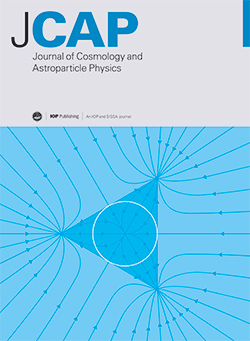SpyDust: an improved and extended implementation for modeling spinning dust radiation
IF 5.3
2区 物理与天体物理
Q1 ASTRONOMY & ASTROPHYSICS
Journal of Cosmology and Astroparticle Physics
Pub Date : 2025-03-19
DOI:10.1088/1475-7516/2025/03/038
引用次数: 0
Abstract
This paper presents SpyDust, an improved and extended implementation of the spinning dust emission model based on a Fokker-Planck treatment. SpyDust serves not only as a Python successor to spdust, but also incorporates some corrections and extensions. Unlike spdust, which is focused on specific grain shapes, SpyDust considers a wider range of grain shapes and provides the corresponding grain dynamics, directional radiation field and angular momentum transports. We recognise the unique effects of different grain shapes on emission, in particular the shape-dependent mapping between rotational frequency and spectral frequency. In addition, we update the expressions for effects of electrical dipole radiation back-reaction and plasma drag on angular momentum dissipation. We also discuss the degeneracies in describing the shape of the spectral energy distribution (SED) of spinning dust grains with the interstellar environmental parameters. Using a typical Cold Neutral Medium (CNM) environment as an example, we perform a perturbative analysis of the model parameters, revealing strong positive or negative correlations between them. A principal component analysis (PCA) shows that four dominant modes can linearly capture most of the SED variations, highlighting the degeneracy in the parameter space of the SED shape in the vicinity of the chosen CNM environment. This opens the possibility for future applications of moment expansion methods to reduce the dimensionality of the encountered SED parameter space.求助全文
约1分钟内获得全文
求助全文
来源期刊

Journal of Cosmology and Astroparticle Physics
地学天文-天文与天体物理
CiteScore
10.20
自引率
23.40%
发文量
632
审稿时长
1 months
期刊介绍:
Journal of Cosmology and Astroparticle Physics (JCAP) encompasses theoretical, observational and experimental areas as well as computation and simulation. The journal covers the latest developments in the theory of all fundamental interactions and their cosmological implications (e.g. M-theory and cosmology, brane cosmology). JCAP''s coverage also includes topics such as formation, dynamics and clustering of galaxies, pre-galactic star formation, x-ray astronomy, radio astronomy, gravitational lensing, active galactic nuclei, intergalactic and interstellar matter.
 求助内容:
求助内容: 应助结果提醒方式:
应助结果提醒方式:


